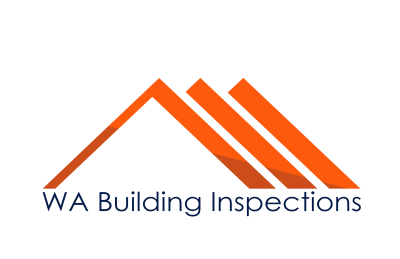- Breaking News: Russell McCarthy’s Insights Featured: Russell McCarthy, lead inspector featured in the RAC article, emphasising the critical importance of early detection in preventing costly building defects.
- Diverse Warning Signs: From doors and windows to roofs and walls, the article explores a range of warning signs, underscoring the need for prompt action to avoid extensive damage.
- Collaborative Awareness for Homeowners: The collaboration between McCarthy and RAC aims to empower homeowners with expert insights, fostering a proactive approach to address potential risks and ensure the long-term safety of their properties.
Our love city of Perth, a city known for its stunning architecture and modern infrastructure, hides a silent menace within its buildings. As featured by a recent RAC article with our lead building inspector Russell McCarthy, the city is grappling with common building defects that can undermine the structural integrity and safety of homes and commercial spaces. Let’s delve into the intricacies of Perth’s most common building defects, drawing insights from Russell McCarthy’s expertise so you know what to look out for in your existing house or one you might be buying.
The Importance of Home Inspections
Before we uncover the specific defects, let’s emphasise the crucial role of building inspections in Perth. These assessments are not mere formalities but essential safeguards against potential disasters. They provide a comprehensive view of a property’s condition, ensuring that any issues are identified and addressed promptly. We don’t need to look to far into the past to remember the iplex plumbing failure fiasco that has impacted thousands of homes in Perth. From leaking plumbing, to dodgy roofing, a building inspection in Perth is simply a no-brainer when you’re buying a house or for your peace of mind in your existing home.
Before we explore the warning signs, it’s crucial to underscore the importance of regular home inspections. McCarthy emphasises that these assessments are not only for older homes; even new constructions can harbor defects. Early detection through inspections can save homeowners from substantial repair costs and inconveniences.
Russell McCarthy’s Expert Insights
Russell McCarthy, a leading Building and Pest Inspector in Perth, shares invaluable insights into the subtle indicators of potential structural problems. His expertise sheds light on the importance of understanding these signs early on, ultimately preventing major issues down the line.
Signs of Building Defects
Issues with Doors and Windows
Doors and windows that don’t operate smoothly may seem innocuous, often attributed to aging materials. McCarthy, however, warns that these signs might indicate more severe defects, such as issues with steel lintels, rust, or water ingress. Identifying and addressing these problems promptly is crucial to preventing extensive and expensive repairs.
External Wall Cracks
External wall cracks are a common sight in homes, but their patterns can reveal critical information. McCarthy explains that subsidence or foundation movement is often the culprit, especially in double-brick homes. Recognizing the width and contours of these cracks is essential in determining whether stabilisation measures are necessary.
Internal Wall Cracks
Cracks within the interior walls are often linked to roof or roof frame issues. McCarthy distinguishes between harmless cornice cracking and more concerning vertical cracks, emphasizing the need for a thorough assessment to understand the root cause and implement appropriate fixes.
Sagging or Uneven Roof
A sagging ceiling, sagging roof may appear alarming, and McCarthy details various potential causes, including detached rafters, compromised underpurlins, or natural sagging in older homes. Identifying the specific issue is crucial for determining the most effective and cost-efficient solution.
Damp Patches on the Ceiling
Damp patches on the ceiling can result from various sources, including roof leaks, blocked gutters, or issues with ducted air conditioning. McCarthy advises homeowners to address these problems promptly, as a sagging roof can exacerbate water ingress points, leading to more extensive damage.
Damp Patches on Walls
Damp walls often signal waterproofing issues or leaks, with potential causes ranging from faulty waterproofing membranes to gutter systems allowing water into wall cavities. McCarthy stresses the importance of identifying and rectifying the source to prevent rising damp and other structural concerns.
Signs of Termites
Termites, though small, can cause significant damage. McCarthy explains the signs, such as mud tubes, sand trails, and hollowed-out timber, urging homeowners to conduct annual professional pest inspections for early detection and prevention.
RAC’s Article on Home Warning Signs
Looking at Vanessa Pogorelic’s (RAC) article adds another layer of insight into common warning signs around the home. The collaboration between RAC and experts like McCarthy underscores the collective effort to educate homeowners on potential risks.
Understanding Vanessa Pogorelic’s Insights
Vanessa Pogorelic’s article amplifies the importance of recognizing small signs that could lead to substantial home repairs. It complements McCarthy’s expertise, emphasizing the role of good maintenance and early detection in mitigating risks for homeowners.
Our Final Say
Perth’s homes, though architecturally captivating, demand vigilant attention to potential defects. Combining McCarthy’s expertise with RAC’s informative articles, homeowners can proactively address warning signs and ensure the longevity and safety of their properties.
FAQs
1. How frequently should I conduct home inspections?
Regular inspections, at least annually, are recommended to catch potential issues early.
2. Are all cracks in walls a cause for concern?
No, settlement cracks are normal, but the width, pattern, and location of cracks matter. Consult a professional for assessment.
3. What steps can I take to prevent a sagging roof?
Ensure proper roof maintenance, address leaks promptly, and consider replacing heavy roof tiles with a lightweight metal cover.
4. How can I detect termite activity around my home?
Look for mud tubes, sand trails, and hollowed-out timber. Annual professional pest inspections are crucial for early detection.
5. Is dampness in the ceiling always a significant concern?
Dampness can result from various issues like water leaks water ingress, or other issues. Promptly address the source, especially if a sagging roof is present, to prevent extensive damage.


